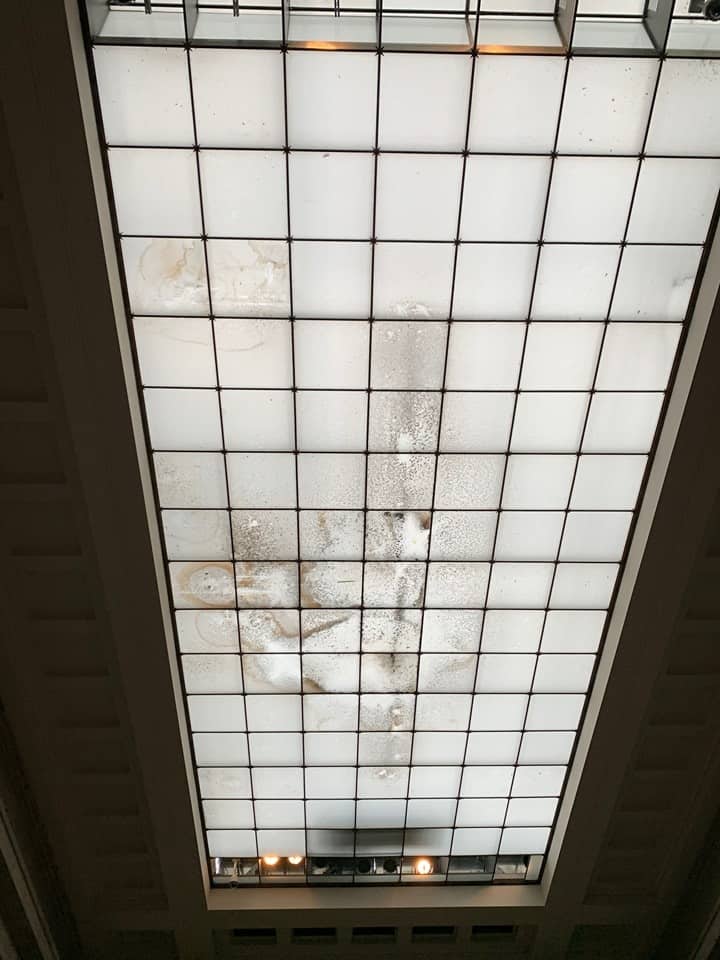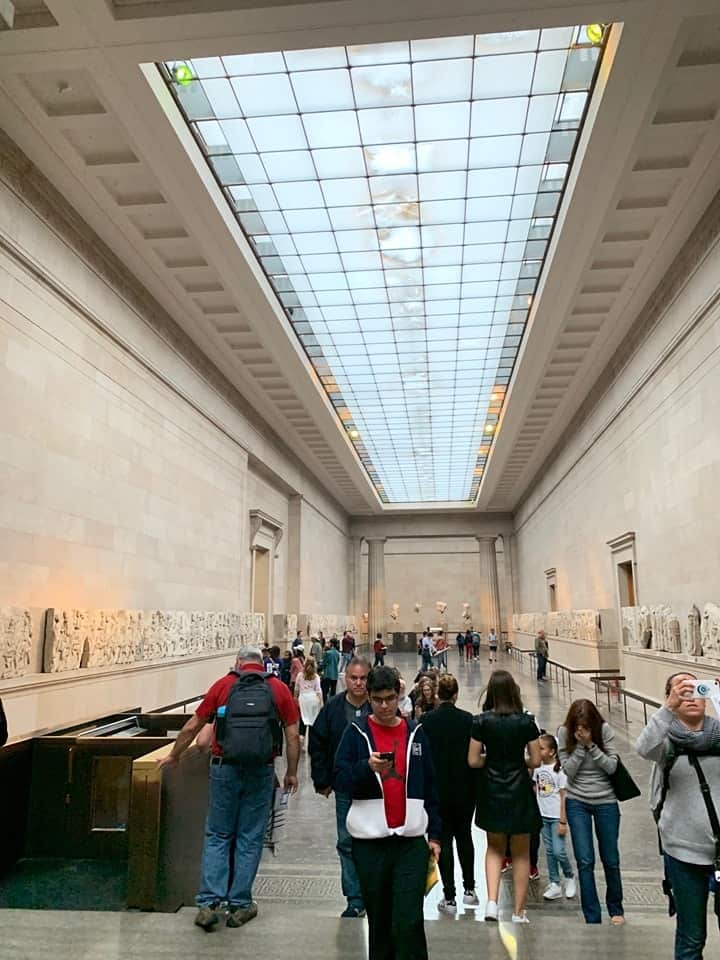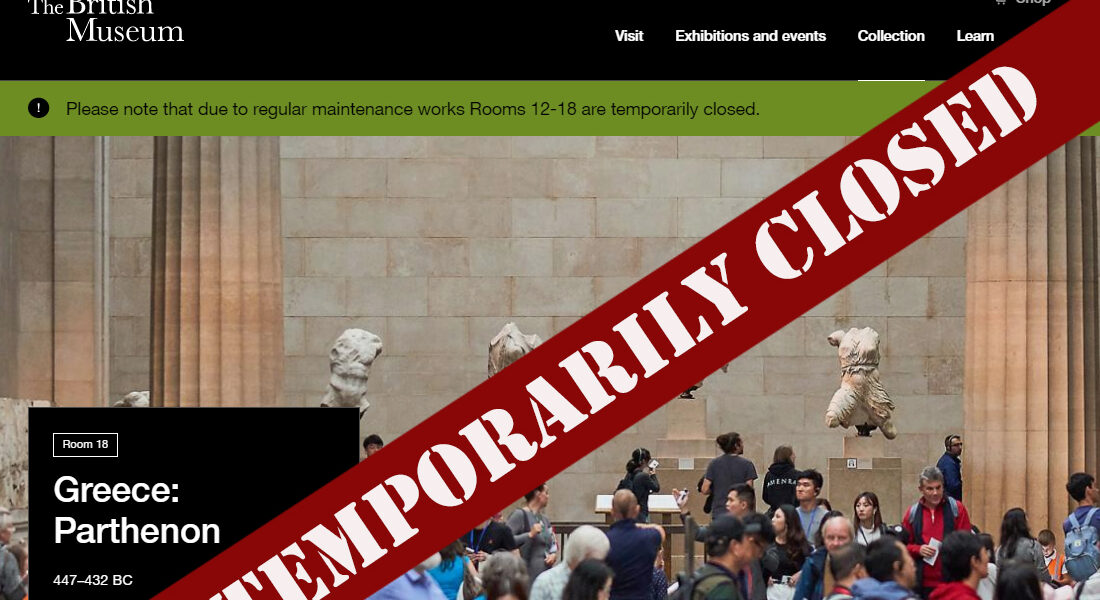So the British Museum is leaking.
The images that recently emerged of water leaking in the Duveen Gallery are disappointing, but they are not new. Whilst the British Museum claims that following a heavy downfall there was “some water ingress” in one of the Greek galleries, and that the Covid-19 pandemic has delayed maintenance works in the closed galleries, the truth is that the museum has suffered from structural problems for decades.


On 9 January 1995, a prominent Greek Member of the European Parliament, Alexandros Alavanos, raised with the European Commission the parlous state of the British Museum, noting that the museum itself had admitted that in October 1994, following heavy rains, water had leaked from the roof into the Parthenon sculptures gallery.
Further, this was not an isolated incident as there had also been reports of dampness causing considerable damage in the rooms housing the Assyrian sculptures and reliefs.
The Greek MEP pointed out that the Greek Ministry of Culture was very concerned about the dangers facing the Parthenon sculptures and had suggested that Greek archaeologists and conservators from the Acropolis Museum assist the British Museum to tackle the problem effectively.
Pointedly, Mr Alavanos asked:
“Does the Commission share these concerns, bearing in mind that the Parthenon sculptures are considered to be a very important part of the common European heritage? Will it investigate the extent of the problem caused by water leaking into the room where this common cultural treasure is exhibited? Does it have any ideas on promoting joint programmes for the conservation, exhibition and custody of this treasure, which could be assumed jointly by the Member State of origin (Greece) and the Member State in which it is housed (the United Kingdom)?”

Evidently, nothing happened and the problem has clearly not gone away. In 2018 photos appeared showing water seepage was again bedevilling the Duveen Gallery.
No wonder that in 2019 the former President of the Hellenic Republic, Prokopis Pavlopoulos, spoke of the “murky prison” where the Parthenon Sculptures are exhibited.
According to The Art Newspaper, the now closed galleries of Greek art were supposed to open to the public in late July, but they remain closed and inaccessible to the general public until further notice.

The Greek Culture Minister, Dr Lina Mendoni, was again outraged by the spectre of a closed and leaking gallery which houses the incomparable but dismembered sculptural elements of the Parthenon. In a ministerial media release, Dr Mendoni, who had previously lamented the pictures of neglect emerging from Bloomsbury, declared:
"This is not the first time that photographs have been published that reveal that the conditions for exhibiting the Parthenon Sculptures at the British Museum are not only inappropriate, but also offensive, if not dangerous. In September 2019, when similar photos were published, we had stressed that these images fully strengthen Greece’s legal, ongoing and non-negotiable demand for the reunification of the Sculptures. The Sculptures of the Parthenon, the supreme monument of Western Civilisation, must return to their homeland, cease to be cut off from the monument to which they belong and from which they were violently detached, and be exposed again to the Attic light".

But the British Museum remains tone deaf. As far as it is concerned, Lord Elgin had ‘rescued’ the sculptures and in 1816 they were legally acquired by the British Government and placed into the care and stewardship of the British Museum, the gallery of the Enlightenment. The Elgin Room in turn became one of the “central places on earth”.
And besides, the Greeks were incapable of looking after their own cultural artefacts, so be thankful.
Well that, at least, has been British Museum’s self-legitimising narrative about the Elgin Collection and why the Parthenon Sculptures should remain in London.
The 1930s cleaning scandal severely dented the British Museum’s reputation when the unscrupulous art dealer, Lord Duveen, employed workers to scrape off the original patina of many of the sculptures in the deluded belief that the Phidian forms were originally pure white in colour. That that scandal was covered up until the noted historian, William St Clair, published the sordid details in the revised 1998 edition of his seminal work, Lord Elgin and the Marbles.
For decades, the British Museum and the UK cultural establishment have refused to engage with the Greeks in any meaningful dialogue to attempt to resolve this long-standing cultural dispute and, as a last desperate tactic, warn that if the British Museum returns the sculptures it will open the floodgates for the repatriation of other looted cultural treasures. How ironic it is that the flooding is from within.
The Parthenon Sculptures need to be rescued from the cavernous and soulless confines of the Duveen Gallery and relocated to their natural sanctuary within the superlative Acropolis Museum in Athens.
Like departing souls from leaking roofs.
-by George Vardas, Vice-President, Australian Parthenon Committee
READ: Greece outraged at mold surrounding Parthenon Sculptures - YouTube


